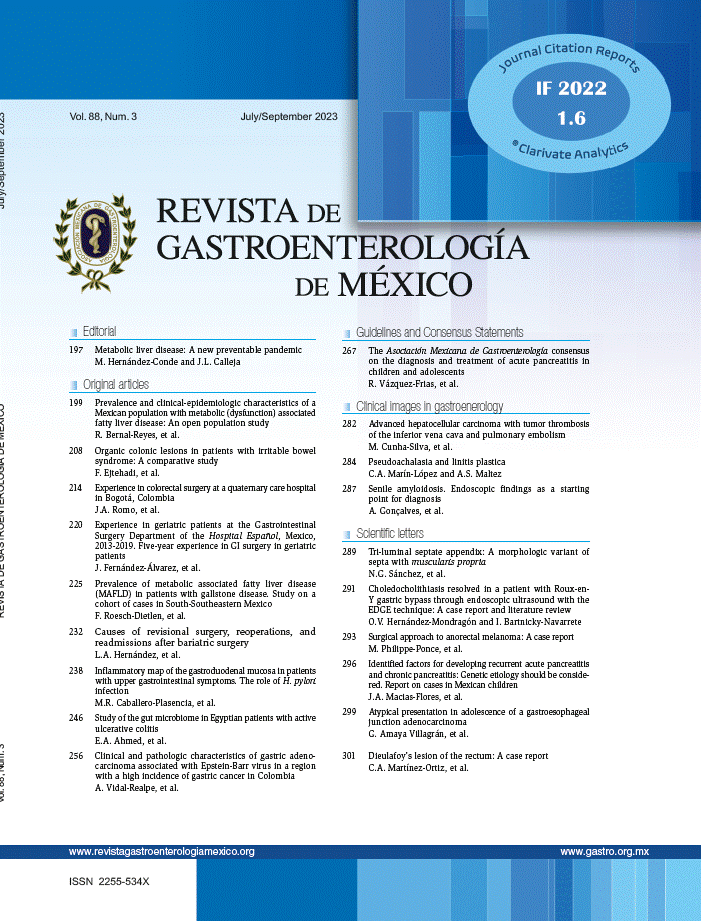The first Mexican consensus on Crohn’s disease1 is a complete review of the disease that is immensely valuable in our population. As a pathologist, my intention is to emphasize certain points in module 2, regarding morphologic interpretation.
Very relevant data are described, such as the sampling of segments with macroscopic involvement, as well as that of apparently healthy segments, due to the discontinuous nature of the disease, making it possible to adequately interpret the zonal distribution of the disease, a factor that can influence its adequate classification.
Several criteria are mentioned that are useful for classifying the disease, such as the presence of granulomas, abnormal crypt architecture, or the type of inflammatory infiltrate. However, it is extremely relevant to recognize that the histopathologic findings of Crohn’s disease go beyond those and are nonspecific. For example, granulomas (not associated with crypt rupture) are present in diseases, such as tuberculosis, Yersinia infection, and diversion colitis, among others. Architectural abnormality can be recognized in diseases that cause chronic damage to the mucosa, such as infections (e.g., amoebic colitis), radiation colitis, and ischemic colitis, to name a few. The presence of plasmacytosis is usually seen in colitis associated with diverticulosis, syphilis, or the presence of lymphoid follicles in patients with human immunodeficiency virus (HIV).2
Similarly, the findings in Crohn’s disease can be atypical, such as superficial-type Crohn’s disease (or Crohn’s disease with typical ulcerative colitis [UC] characteristics), in which transmural involvement is not identified.3 Cicatrization and repair in inflammatory bowel disease (IBD) are also aspects to consider, given that the mucosal segments that are healed after treatment or in very early phases of the disease can be normal morphologically. This can also occur in UC, whose mucosal healing and repair are not homogeneous and may show an apparently discontinuous pattern of involvement.2
All this leads to variability in histopathologic reports that, depending on the clinical context, may be consistent with Crohn’s disease, such as “mucosa with no histologic alterations”, “chronic colitis with and without signs of activity”, and “colitis with focal or diffuse activity”, among many other variants that depend on the reporting style of each pathologist.
Another point to clarify is the use of the term “unclassified IBD” that is provisionally used until the disease is adequately classified, unlike the term “indeterminate IBD” that is restricted to surgical resection specimens, in which the overlap of Crohn’s disease and UC is significant, making a decisive distinction impossible.4
These points highlight the crucial importance of active and efficacious communication between the treating physician and the pathologist, because patient management and results may be directly impacted.
Ethical considerationsThe present work meets the current bioethical research norms. It did not require approval by an ethics committee, given that no diagnostic or therapeutic interventions were involved. The author declares that this letter contains no personal data in the text or annexes that could identify any patient.
Financial disclosureNo specific grants were received from public sector agencies, the business sector, or non-profit organizations in relation to this Letter to the Editor.



